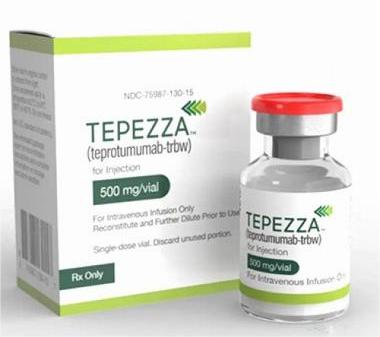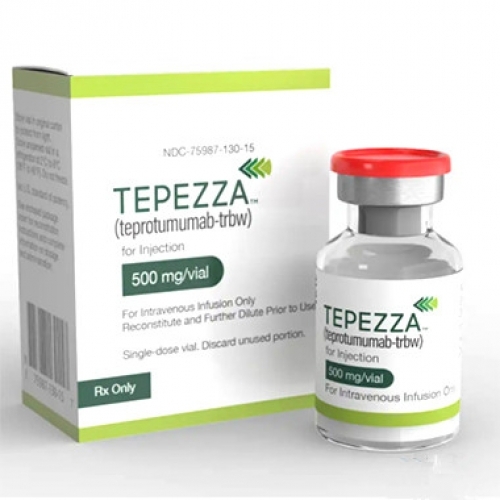Thyroid eye disease is an autoimmune disorder characterized by inflammation and swelling of the tissues around the eyes. This leads to a range of symptoms, including eye bulging, double vision, eye pain, and in severe cases, vision loss. Prior to the introduction of Tepezza, treatment options for TED were limited to primarily managing symptoms or undergoing invasive surgical procedures. However, Tepezza has emerged as a game-changer in the field of thyroid eye disease treatment.
Tepezza works by targeting a specific molecule known as insulin-like growth factor 1 receptor (IGF-1R), which plays a crucial role in the development of TED. By blocking the activation of IGF-1R, Tepezza effectively mitigates the underlying inflammation and subsequent tissue damage, leading to a reduction in ocular proptosis. The drug is administered intravenously once every three weeks for a total of eight infusions.

To ensure the safe and effective use of Tepezza, it is important to follow the prescribed dosage and administration instructions. The medication is administered by a healthcare professional in a clinical setting. Each infusion typically lasts for about one hour, during which the patient is closely monitored for any adverse reactions or side effects that may occur.
The treatment course of Tepezza involves a total of eight infusions administered over a period of 24 weeks. This treatment schedule is designed to maximize the drug's therapeutic potential while minimizing the risk of adverse effects. It is crucial for patients to adhere strictly to this regimen and complete the full course of treatment as specified by their healthcare provider.
During the treatment period, patients may experience various side effects, though they are generally mild and temporary. The most common side effects reported include muscle spasms, nausea, hair loss, diarrhea, and fatigue. In some cases, the drug may also cause an allergic reaction, manifesting as rash, itching, swelling, or difficulty breathing. Should any of these side effects occur or persist, it is essential to notify the healthcare provider immediately for appropriate management.
Tepezza has shown remarkable efficacy in clinical trials, with a significant number of patients experiencing a reduction in ocular proptosis and improvement in related symptoms. It is important to note, however, that individual responses may vary, and not all patients may experience the same level of improvement. Regular follow-up appointments with the treating healthcare provider are necessary to monitor progress and adjust the treatment plan if necessary.
In conclusion, Tepezza represents a breakthrough in the treatment of thyroid eye disease, offering a promising solution to patients suffering from ocular proptosis. The drug's unique mechanism of action and demonstrated efficacy make it a valuable addition to the management of thyroid eye disease. With proper adherence to the prescribed dosage and administration instructions, Tepezza has the potential to significantly improve the quality of life for individuals affected by this debilitating condition.
 Tepezza的相关介绍
Tepezza的相关介绍
注:本站所有内容仅供参考,不代表药直供立场(如有错漏,请帮忙指正),转载请注明出处。不作为诊断及治疗依据,不可替代专业医师诊断、不可替代医师处方。本站不承担由此导致的相关责任!
2023-09-06 18:47:40 更新
 全部分类
全部分类




 美国Horizon Pharma
美国Horizon Pharma


 粤ICP备2021070247号
粤ICP备2021070247号
